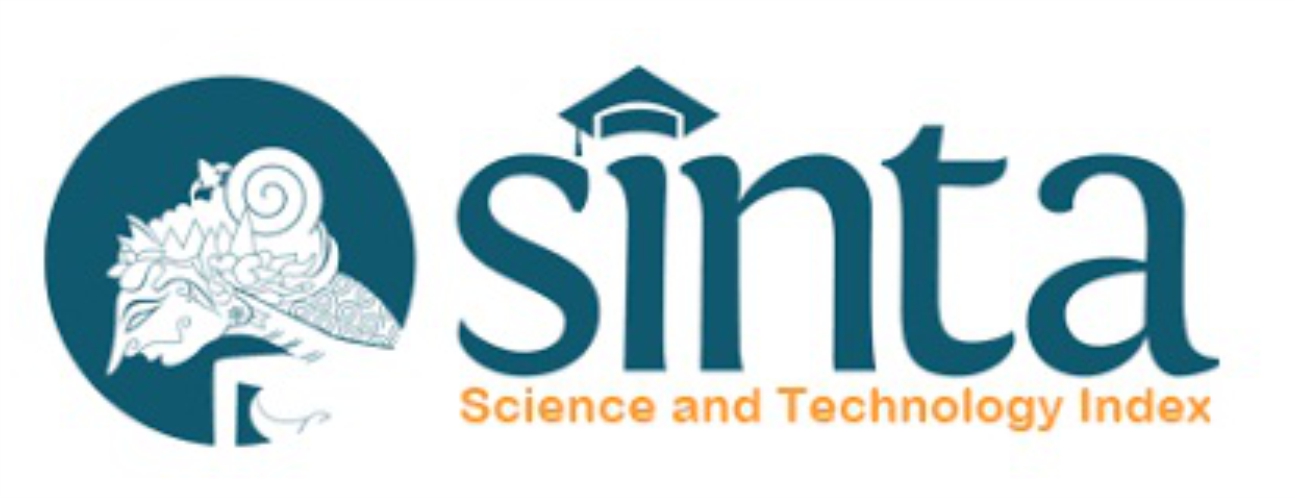Identification of the Secondary Metabolites and Characterization of Lagerstroemia Loudonii T. & B.
Abstract
Bungur (Lagerstroemia loudonii T. & B) is a type of plant widely grown in Indonesia and can be found in teak forests, mixed forests, and is found as ornamental plants or protective trees on the roadside. In the fruit section, Lagerstroemia loudonii is used as antituberculous and antimalarial. On the bark, the part is used as antidiarrheal. Based on some parts of the Lagerstroemia loudonii plants' activity data, this plant has the potential to be developed into traditional medicine. Standardized traditional medicine material is necessary to identify efficacious compounds and characterization in some parts of Lagerstroemia loudonii. The purpose of this research is to develop Lagerstroemia loudonii into traditional herbal medicine or standardized herbal medicine. Identification of efficacious compounds and characterization of crude leaf drugs, bark, stems, and fruit of Lagerstroemia loudonii. The phytochemical screening phase of the crude drugs of leaves, bark, stems, and fruit ofLagerstroemia loudonii against includes examining alkaloids, flavonoids, quinones, tannins, polyphenols, saponins, steroids and triterpenes, monoterpenoids and sesquiterpenoids. The determination of the characteristics of raw material carried out includes nonspecific parameters. Nonspecific parameters are the determination of total ash content, water-soluble ash content, acid insoluble ash content. each experiment was carried out three times and calculated the average yield and deviation. Identification results of the class of efficacious compounds in some parts of the Lagerstroemia loudonii plant are on the leaves and fruits containing alkaloids, flavonoids, saponins, quinones, tannins, polyphenols, monoterpenoids, and sesquiterpenoids as well as steroids and triterpenoids. At the bark and stem, the bark contains alkaloids, flavonoids, saponins, quinones, tannins, polyphenols, monoterpenoids, and sesquiterpenoids. Characterization results of Lagerstroemia loudonii leaf extract total ash content 4.45 ± 0.30% w/w, water-soluble ash content 4.08 ± 0.27% w/w, acid insoluble ash content 0.59 ± 0.06% w/w, the extract specific gravity was 0.59 ± 0.063. Lagerstroemia loudonii stem bark extract, total ash content 1.94 ± 0.12% w/w, water-soluble ash content 1.47 ± 0.03% w/w, acid insoluble ash content 0.24 ± 0.02% w/w, the extract specific gravity is 0.82 ± 0.01. Lagerstroemia loudonii stem extract, total ash content3.18 ± 0.16% w/w, water-soluble ash content 2.36 ± 0.38% w/w, acid insoluble ash content 0.43 ± 0.07% w/w, extract specific grafity 0.81 ± 0.01. Lagerstroemia loudonii fruit extract, total ash content 11.45 ± 1.16%w/w, water-soluble ash content 10.1 ± 1.49% w/w, acid insoluble ash content 1.46 ± 0.88% w/w,extract specific grafity 0.81 ± 0.01. Based on phytochemical screening data and the characterization of bungur plants potential to be developed into raw materials for traditional medicine
Keywords: Lagerstroemia loudonii, secondary metabolite, raw material characterization
Full Text:
PDFReferences
Hariana, H. A., 2004, Medicinal Plants and Their Benefits, 1st Mold, Penebar Swadaya, Jakarta.
Muhlisah, F. 2006, Family Medicine Park, 13th Printing, Self-Help Spreader. Jakarta
Lee, K.H., H.K. Wang, H. Itokawa, and S.L. Morris-Nitschke. 2000. Current perspectives on Chinese medicines and dietary supplements in China, Japan, and the United States. Journal of Food and Drug Analysis 8 (4): 219-228.
Khan, M.T.H., L. Lampronti, D. Martello, N. Bianchi, S. Jabbar, M.S.K. Choudhuri, B.K. Datta, and R. Gambari. 2002. Identification of pyrogallol as an antiproliferative compound present in extracts from the Emblica medicinal plant: effect on in vitro cell growth of human tumor cell lines. International Journal of Oncology 20: 187-192.
Heyne, K., 1987, Indonesian Useful Plants, Volume III, a.b. Jakarta Forestry Research and Development Agency, Publisher of the Sarana Wana Jaya Foundation, Jakarta.
Dalimartha, S., 2003, Atlas of Indonesian Medicinal Plants, Volume II, Trubus Agriwidya, Jakarta.
Setiawan, D. 2000. Atlas of Indonesian Medicinal Plants. Volume 2. Trubus Agriwidya, Jakarta.Mishra, Y., M.S.Y. Khan, R. Zafar, and S.S. Agarwal. 1990. Hypoglycaemic activity of leaves of Lagerstroemia speciosa L. Press. Indian Journal of Pharmacology 22: 174-176.
Kakuda, T., I. Sakane, T. Takihara, Y. Ozaki, H. Takeuchi, and M. Kuroyanagi. 1996. Hypoglycemic effect of extracts from Lagerstroemia speciosa L. leaves in genetically diabetic KKAy mice. Bioscience, Biotechnology, and Biochemistry 60 (2): 204-208.
Liu, F., J. Kim, Y. Li, X. Liu, J. Li, and X. Chen. 2001. An extract of Lagerstroemia speciosa L. has insulin-like glucose uptake-stimulatory and adipocyte differentiation inhibitory activities in 3T3-L1 cells. Journal of Nutrition 131: 2242-2247.
Hayashi, T., H. Maruyama, R. Kasai. K. Hattori, S. Takasuga, O. Hazuki, K. Yamasaki, and T. Tanaka. 2002. Ellagitannins from Lagerstroemia speci as activators of glucose transport in fat cells. Planta Medica 68: 173-175.
Boonphong, S., Mopoung, S., Maneerungroj, C., Yannalarp, P., & Udeye, V. 2003. Bioactivity Screening of Lagerstroemia. Naresuan University Research Report. Budhi, M., 1994. The stages of developing traditional medicine. Udayana Medical Magazine 5: 107–113.
Suzuki, Y., Unno, T., Ushitani, M., Hayashi, K., & Kakuda, T. (1999). Antiobesity Activity of Extracts from Lagerstroemia speciosa L. leaves on female KK-Ay Mice, (November), 791–795.
Anonim., 2008, Indonesian Herbal Pharmacopoeia, Ministry of Health of the Republic of Indonesia, Jakarta
Robinson, T., 1991, High Plant Organic Content, 6th Edition, a.b. Kosasih Padmawinata, ITB, Bandung.
Markham, K. R., 1988, How to Identify Flavonoids, a.b. Kosasih Padmawinata, ITB, Bandung.
Saleh, M, I., 2016. Inhibitor Activity of -Glucosidase Enzyme Extract and Bark Fraction of Batang Bungur (Lagerstroemia loudonii T. & B.) In Vitro. Thesis. Universitas Jenderal Achmad Yani.
Pratiwi. S. 2016. Phytochemical Study of Bungur Stem Bark (Lagerstroemia loudonii T. & B.). Thesis. Universitas Jenderal Achmad Yani.
Sirimethawong, K., Sriwattanawarunyoo, C., & Udeye, V.2013. Waxes and Triterpene acids from Lagerstroemia loudonii fruit. International Journal of Science. 10(2), 33–43.
Sirimethawong, K., Sriwattanawarunyoo, C., & Udeye, V.2013. Waxes and Triterpene acids from Lagerstroemia loudonii fruit. International Journal of Science. 10(2), 33–43.
DOI: https://doi.org/10.18860/jip.v6i1.11351
Refbacks
- There are currently no refbacks.
Copyright (c) 2021 Fahrauk Faramayuda
© 2023 Journal of Islamic Pharmacy










